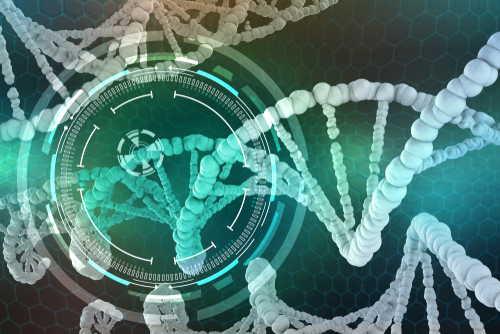Study Recommends ARMC5 Gene Analysis for Cushing’s Patients With Bilateral Adrenal Masses
Written by |

More than half of the people with Cushing’s syndrome due to masses in both adrenal glands have disease-causing mutations the ARMC5 gene, a small study has found, suggesting that such patients should undergo genetic analysis for this gene.
The study, “Allelic Variants of ARMC5 in Patients With Adrenal Incidentalomas and in Patients With Cushing’s Syndrome Associated With Bilateral Adrenal Nodules,” was published in Frontiers in Endocrinology.
Primary macronodular adrenal hyperplasia (PMAH), a disorder characterized by multiple nodules, or lumps, in the adrenal glands and excessive production of cortisol, is a rare cause of Cushing’s syndrome.
Mutations in the armadillo repeat containing 5 (ARMC5) gene have been identified in both familial and apparently sporadic cases of PMAH, but the real incidence and prevalence of the condition are unknown.
The nodules in PMAH usually occur in both adrenal glands (bilateral) or, rarely, in only one gland (unilateral). The latter are usually identified in the context of adrenal incidentaloma (AI), an adrenal mass, benign or malignant, found by chance in an imaging test. In contrast, bilateral adrenal incidentalomas are rare, representing about 15% of all AIs.
“It is unknown which of these patients belong to the [diverse] spectrum of PMAH,” the researchers said. And “it is not clear if apparently sporadic cases of PMAH diagnosed as unilateral or bilateral adrenal incidentalomas, where familial clinical screening has not been performed, should be screened to ARMC5 analysis.”
To investigate this, researchers conducted a retrospective analysis on 123 patients followed at the University of São Paulo and University Federal of São Paulo, in Brazil, and at the University of Padova, in Italy.
Patients were divided into three groups: those with bilateral adrenal incidentalomas, unilateral adrenal incidentalomas, and those with Cushing’s syndrome due to bilateral adrenal masses.
Among the 64 patients with bilateral adrenal incidentalomas, 22 (34.4%) had normal cortisol secretion, 27 (42.2%) had possible cortisol secretion, and the remaining 15 (23.4%) had excess cortisol production, as determined by a dexamethasone suppression test.
In 84.4% of these patients, the researchers found variants in the ARMC5, but most were deemed non-disease causing. Only one patient, with higher-than-normal levels of cortisol, had a disease-causing mutation in this gene, which was also found in two other family members.
In turn, the 59 patients with unilateral adrenal incidentalomas included 38 (64.5%) with nodules located on the right adrenal gland, and 21 (35.5%) with left adrenal masses. About half of these patients (57%) had normal cortisol levels, 30.5% had possible elevations in cortisol, and 11.9% had confirmed cortisol excess.
In eight cases, the unilateral masses progressed to bilateral, and five of these patients had a confirmed diagnosis of PMAH after surgery. However, while 69.5% of these patients had mutations in ARMC5, all had non-disease-causing variants of the gene.
“The rarity of germline ARMC5 [disease-causing mutations] in AI leads to the hypothesis that other molecular mechanisms are involved in this common adrenal disorder and should be investigated,” the team wrote.
Finally, the researchers examined 20 patients with endogenous Cushing’s syndrome, all of whom had possible or confirmed cortisol excess, and bilateral adrenal masses.
All patients had undergone surgery to control excess cortisol levels, but only one had removed both adrenal glands. The others had removed the largest adrenal gland along with the affected portion of the other gland.
The researchers found that 65% of these patients had disease-causing ARMC5 mutations, including six unrelated families, with a total of 11 screened members. This knowledge may improve future clinical care in these families, the researchers wrote.
“The frequency of patients with overt Cushing’s syndrome and bilateral adrenal nodules due to the presence of ARMC5 mutations was similar to that found in the literature,” they said. “Therefore, we recommend the genetic analysis of ARMC5 for patients with established Cushing’s syndrome and bilateral adrenal nodules rather than for patients with unilateral adrenal incidentaloma.”





